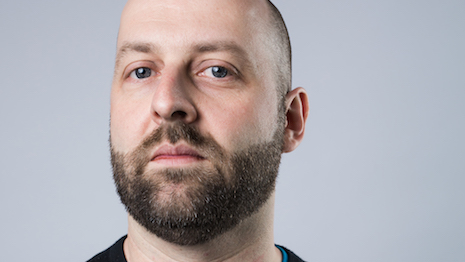 Alastair Green is executive creative director at Team One
Alastair Green is executive creative director at Team One
By Alastair Green For a churn-and-burn consumer culture that is obsessed with the hottest, newest and latest, we sure are clinging to the past these days. Look no further than the resurgence of turntables and vinyl, Polaroid-style instant cameras, miniseries such as “Stranger Things” and any hyped ‘90s-infused streetwear. The retro trend is even more pronounced in technology, with the reintroduction of the cheap and sturdy Nokia 3310 and Nintendo’s NES gaming console. Podcasts, a digital version of the old radio show, are all the rage. Have not started listening to S-Town yet? Binge worthy. Marketers as varied as Microsoft and Airbnb are using throwback imagery in their advertising, and six of the top 10 highest-regarded companies in 2017 are classic brands, among them hundred-year-old heritage players Rolex, Hershey and Fruit of the Loom, according to Reputation Institute’s recent poll of United States shoppers. Why are so many of us looking backward? Old school is cool My theory, in part, is that we have idealized the previous decades such as the 1980s and ‘90s, thinking of them as simpler, sweeter, calmer eras. Was not everything less complicated then? In truth, it was not really, but our hazy hindsight makes it seem that way. Another reason for our nostalgia? We have reached what I call peak complexity, where we are inundated non-stop with new technology, digital advances and gadgets of all description. It is nearly impossible to stay on top of the latest developments, and we are all but crushed under the metaphorical weight of our own FOMO. Do I cut the cord and go full streaming? Should I outfit my house with smart devices? None of them communicate with each other yet, so what a tangled web that could quickly become. Add more digital real estate to my social media footprint? Beef up Instagram stories and ditch Snapchat? Start squirreling away money for a helper robot? Get in line for a self-driving car? Too many decisions, way too many user interfaces, and far too much to master. I did not coin this term, though I wish I had, but the Internet of Things is often, in actuality, the Internet of Tears. Oh, the frustration. Oh, the hyperventilation. It is no wonder, then, that we are responding by embracing books – yes, the paper kind – and hunkering down, as well as cooking our own dinners, even if Blue Apron delivers the meal kits to our door, or going on digital detox vacations. But there is an upside to this chaos, and marketers can learn from our comfort-seeking reaction to the current frenzied environment. Simple tone We want all the new bells and whistles, make no mistake, but we do not want to have to work so awfully hard for them. Brands need to pare away the unessential, streamlining products and services, taking the pain out of the process for consumers. Any company that makes customers’ lives simpler – and puts the consumers’ needs and interests at the heart of R&D – will benefit across the board, in perception, consideration, loyalty and sales. Use utility as a brand builder. See savvy giants such as Netflix and Amazon. This goes double for marketers trying to reach coveted, affluent consumers, who are even more demanding than the mainstream buyer, especially when it comes to technology. They want simple, responsive interfaces that deliver on the brand promises. They are early adopters, willing to pay top dollar, and they are highly effective brand ambassadors. Artificial intelligence-powered devices such as Google Now and Amazon Echo, while still evolving, are steps in the right direction. These cognitive interfaces allow us to ask a simple question, and get a manageable answer. As opposed to us, as consumers, having to jump hurdles and learn the machines, the machines will continue to learn about us. The complexity for this tech needs to be on the back-end, invisible to the consumer, allowing us, for instance, to coordinate dinner dates among a group of friends without a spreadsheet, dozens of emails and untold auto-incorrect texts. THERE MUST BE an easier way, and I am anxiously awaiting the brand that gives me those capabilities. I think I speak for many of us who say that we do not want to know how the sausage is made. We do not want to see the gears turning. We just want the end result. And it better be worth the wait. Alastair Green is executive creative director at Los Angeles-based Team One, Publicis Groupe’s premium and luxury brand agency. Reach him at alastair.green@teamone-usa.com.
